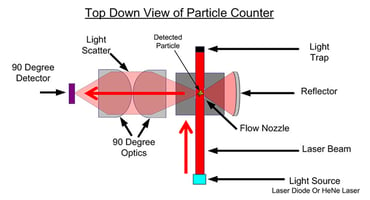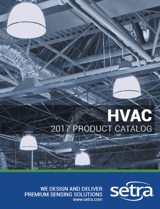To continue operating, a critical environment must meet many safety standards to keep their space free of harmful particles. If an environment is not monitored, it can be easily contaminated by harmful particles such as mold. Air sampling is one of the most common ways to monitor for - and thus prevent - mold. Viable and non-viable air sampling can be employed in detecting mold and other harmful particles in the air. Not monitoring for those particles can lead to disaster.
Viable Air Sampling
There are two types of particles monitored in a critical environment: viable and non-viable. Viable particles are living microorganisms monitored with the viable air sampling method of settled plates. Particles that fall into this category include:
- Bacteria
- Viruses
- Mold
- Pollen
- Yeast
Viable particle counting monitors not only air, but personnel and surfaces as well. To monitor viable particles, samples are captured and colonized before being counted and analyzed. Typically, viable particles range in size from ≈0.2µm to ≈30µm.
Viable air sampling assesses the probability of particle contamination. The main disadvantage of proper viable particle counting is it takes days or weeks to deliver necessary results. The lack of immediate results can cause problems if there is a spike in pathogens. Such contamination would remain undetected until considerable time has passed, which can sometimes be too late to take corrective actions.
Non-Viable Particle Counting
Non-viable particles like dust and smoke do not contain a living microorganism and are not generally harmful on their own; rather, they act as transportation for damaging viable particles.
 Non-viable environmental monitoring counts airborne particles with a system of lasers instead of settled plates. Results from such real-time monitoring are instantaneous.
Non-viable environmental monitoring counts airborne particles with a system of lasers instead of settled plates. Results from such real-time monitoring are instantaneous.
Although particle counters are more mechanically advanced than air samplers, they are unable to differentiate between viable and non-viable particles. Due to this drawback, ISO regulations dictate particle counters cannot operate alone in a Class 7 space.
Keeping a Critical Space Safe
The most effective method for controlling mold and other dangerous particles in a critical environment is employing both viable and non-viable monitoring. To meet safety standards and ensure quality, said standards require facilities to use viable air sampling. in conjunction with this, facilities should utilize continuous non-viable air monitoring to detect immediate spikes in particles. Non-viable air sampling indicates the problem as it occurs, and viable air sampling can then pinpoint exactly what the problem is. The combination of these air sampling techniques means a facility can prevent disaster and tragedy if mold enters the space.


